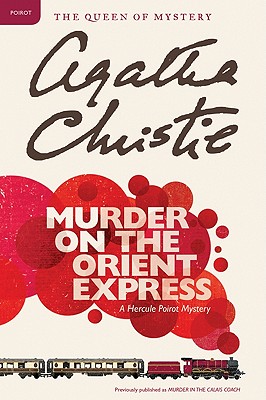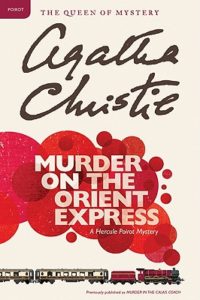Hulu dropped their much anticipated Comedy-Whodunit this week, ONLY MURDERS IN THE BUILDING, starring Martin Short, Steve Martin and Selena Gomez and it got me thinking about this blogpost from 2018. There’s so much writers can learn from well-crafted mysteries about keeping tension alive and well page after page. Enjoy! ~ Kristi
craft review by Kristi Wright
A few months back, while chatting with fellow authors, I proposed that when writing a mystery, it was important to keep the tension going till the bitter end about “whodunit!” I quickly realized that this isn’t a hard and fast rule—we all have beloved mysteries that reveal the identity of the perpetrator well before the last few pages. Let’s call this a guideline or, perhaps, a strategy. Certainly, keeping tension high for as long as possible (perhaps even till the last sentence) is one way to reach a satisfying conclusion for the reader.
To find good mentor text for “tension till the bitter end,” I went directly to one of my most beloved authors—Agatha Christie. Yes, I know. She’s not a middle grade author. However, when I was in my middle grade years, I devoured her books. Surely, that counts. Plus, for a mentor text, why not go straight to the Queen of Mystery?
Rather than spoil the ending of one of her lesser known works, I picked Murder on the Orient Express to analyze for its ending. And yes, I’M SPOILING IT, so watch one of the five adaptations ASAP, or please, please, read the book, before you read this post!
My focus here is the ENDING of a classic mystery, using one of the most classic mysteries of all time, but let’s just quickly review the elements of a good mystery. Most hook us with an intriguing crime (often murder), are chock full of red herrings and possible suspects, give us just enough clues for us to actively attempt to solve the mystery before the big reveal, and have a well-orchestrated denouement where not only do we find out who committed the crime, but we also learn how and why they did it. Masterful storytellers make it possible for us to rifle back through the novel and see that the clues were there all along, if we’d only managed to piece them together. The best endings (IMHO) also provide us with knowledge that justice will be served–the criminal will pay for his/her crime in a most satisfying manner.
Now, let’s focus our craft telescope on the end of Murder on the Orient Express.
KEEP READERS GUESSING
In Murder on the Orient Express, famous detective M. Poirot encounters a most intriguing murder while traveling on a train. The potential suspects come from a variety of classes and nationalities. Everyone seems to have an airtight alibi. As the story unfolds, we discover that the murder victim, Mr. Ratchett, is not who he seems to be. In fact, he’s the infamous Cassetti who kidnapped a three-year old girl, Daisy Armstrong, collected a ransom for her kidnapping, and then killed her anyway.
On page 184 (of 198 pages), M. Poirot makes his friend M. Bouc and new acquaintance, American sleuth Mr. Hardman, aware that all the people on the train are somehow related to the Armstrong case and therefore, mortal enemies of the murder victim. Any one of them could be the murderer. Mr. Hardman asks Poirot if he knows which one killed Ratchett.
“Oh yes,” he [Poirot] said. “I have known for some time.” (pg. 184)
This penultimate chapter ends with Poirot requesting that everyone assemble so that he can lay out the two possible solutions of the case.
At this point, readers likely have formulated their own choice of whodunit. Now they are eager to keep reading to see if they’re right. But wait, what’s the deal with the two solutions? Why are there two solutions?
ACTION: To maintain and even increase tension in your novel, keep your readers guessing. If the readers are asking questions, they will keep reading until they have their answer. Ending your chapter with a mysterious development (like two solutions) will make it hard for your readers to put your book down.
ADD IMPORTANT DECISIONS LATE IN THE GAME
On page 185 the ending officially begins. It’s the last chapter and comprises the last 7% of the book. At this point, Poirot explains to the assembly that after he lays out the two solutions he will ask M. Bouc and Dr. Constantine to judge which solution is the right one. Now there’s more tension for the readers. Not only are there two solutions, but there are two characters tasked with the job of deciding which solution is right. What if they choose poorly? Why is Poirot leaving it up to them?
ACTION: Often a mystery’s tension ends when the detective identifies the criminal. To ensure that there’s still tension even after the big reveal, consider adding another important decision that must occur before there’s ultimate satisfaction.
USE READERS’ EMOTIONS TO INCREASE TENSION
From page 186 to 188, Poirot details a series of events that nominally explain Ratchett’s death as having been perpetrated by a mysterious assailant who has no relationship to the Armstrong case. The reader will be yelling at the book at this point. “NO! That’s not right. Why are you describing such a ludicrous set of events?” Dr. Constantine basically speaks for the frustrated reader:
“But no,” he [Dr. Constantine] said. “No, no, and again no! That is an explanation that will not hold water. It is deficient in a dozen minor points. The crime was not committed so—M. Poirot must know that perfectly well.” (pg. 188)
ACTION: If you can engage your readers’ emotions, you will keep them reading. One way is to make them angry or frustrated. Make them think things like: This can’t be right. Why is the detective doing this? It’s an excellent strategy for forcing them to keep reading (so long as they don’t throw the book across the room first!).
ASK “IS JUSTICE DONE?”
At the bottom of page 188, Poirot begins to methodically explain his second solution. He discusses his first “leap” when he realized that:
“In America, there might be a household composed of just such varied nationalities—an Italian chauffeur, an English governess, a Swedish nurse, a German lady’s-maid, and so on.” (pg. 188)
When he realized that everyone was somehow linked to the Armstrong household and therefore the Armstrong tragedy, he reached his second leap: If that were the case, all the alibis were suspect. What if everyone was an unreliable witness?
“I said to myself: This is extraordinary—they cannot all be in it!” (pg. 192)
But he realized that they were all in it. There were too many coincidences. He remembered that one of the suspects even made a remark about trial by jury.
“A jury is composed of twelve people—there were twelve passengers—Ratchett was stabbed twelve times.” (pg. 192)
Now, the readers know whodunit—THEY ALL DID IT! Each of them stabbed Ratchett one time. But there are still unanswered questions, which means there’s still tension. Readers know WHO and WHY, but they aren’t completely clear about the HOW. Also, readers still have that niggling question—why two solutions? And why allow M. Bouc and Dr. Constantine to judge the solutions? What is M. Poirot up to?
From pages 192 to 196, Poirot details how the crime was orchestrated, filling in all the gaps in the reader’s knowledge and making it possible for readers to now rifle back through the book to check on all the clues.
Agatha Christie does something else in these pages. She reminds the readers via Poirot’s explanation that Ratchett was a vile person who committed a heinous crime. And this tight knit group of conspirators righted a great wrong when they murdered him. By now the readers feel sympathy for the conspirators. They may not think it’s satisfying to have them all go to jail. They may even be anxious about the conclusion.
ACTION: As writers, we can prey on our readers’ emotions to up the tension. Give readers a reason to worry that while justice may be done, it may not be true justice.
THE MASTERFUL CONCLUSION
Now, Christie masterfully hits her final home run. She lets the grandmother of the toddler who was murdered attempt to sacrifice herself. The woman begs Poirot and the two men set up as judges to lay the blame entirely on her, not to destroy more lives.
“… can’t you lay the blame upon me and me only? I would have stabbed that man twelve times willingly. It wasn’t only that he was responsible for my daughter’s death and her child’s and that of the other child who might have been alive and happy now. It was more than that: there had been other children kidnapped before Daisy and there might have been others in the future. Society had condemned him—we were only carrying out the sentence. But it’s unnecessary to bring all these others into it. All these good faithful souls—and poor Michel—and Mary and Colonel Arbuthnot—they love each other….” (pg. 197)
Ahhh! Not only has she eloquently stated what the readers are likely thinking, but she’s reminded them of the stakes had Ratchett lived. The readers are rooting for her, and they’re also devastated for her. She will sacrifice herself for the rest of the team. But is this enough? Will M. Bouc and Dr. Constantine let the others go free? Will they show compassion?
And finally, the readers understand why there were two solutions set forth: to give the judges a plausible alternative to condemning these conspirators who had been so terribly wronged. M. Bouc and Dr. Constantine grasp at the first somewhat plausible (due to M. Poirot’s genius) theory as the one they will tell the authorities when they arrive.
All the readers’ questions have been answered. The ending is now supremely satisfying. Justice has been served. It’s time for the story to end and end quickly. And so it does, on the very next page:
“Then,” said Poirot, “having placed my solution before you, I have the honour to retire from the case….” (pg. 198)
With that, we have an ending where the tension remains high till the last satisfying sentence due to Christie’s strategy of keeping her readers guessing about 1) whodunit, then 2) why and how they “dunit”, and finally 3) whether the consequences for the murder will be satisfying (Will justice be done?).
If Agatha Christie were alive today, this would be the moment when she would drop the mic.
Have fun using some of these classic mystery techniques to keep the tension going in your own books for as long as you possibly can–right up to the bitter end!
Kristi Wright (co-editor) writes picture books and middle grade novels. Her goal as a writer is to give children a sense of wonder, a hopefulness about humanity, and a belief in their future. She is represented by Kurestin Armada at Root Literary. She is an active volunteer for SCBWI and a 12 X 12 member. Find her at www.kristiwrightauthor.com and on Twitter @KristiWrite.



COMMENTs:
0